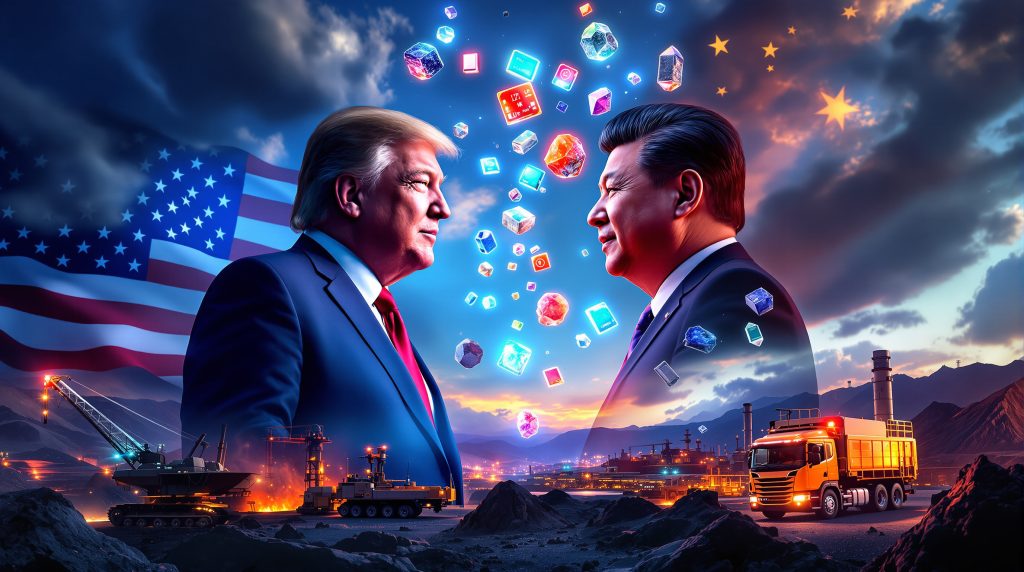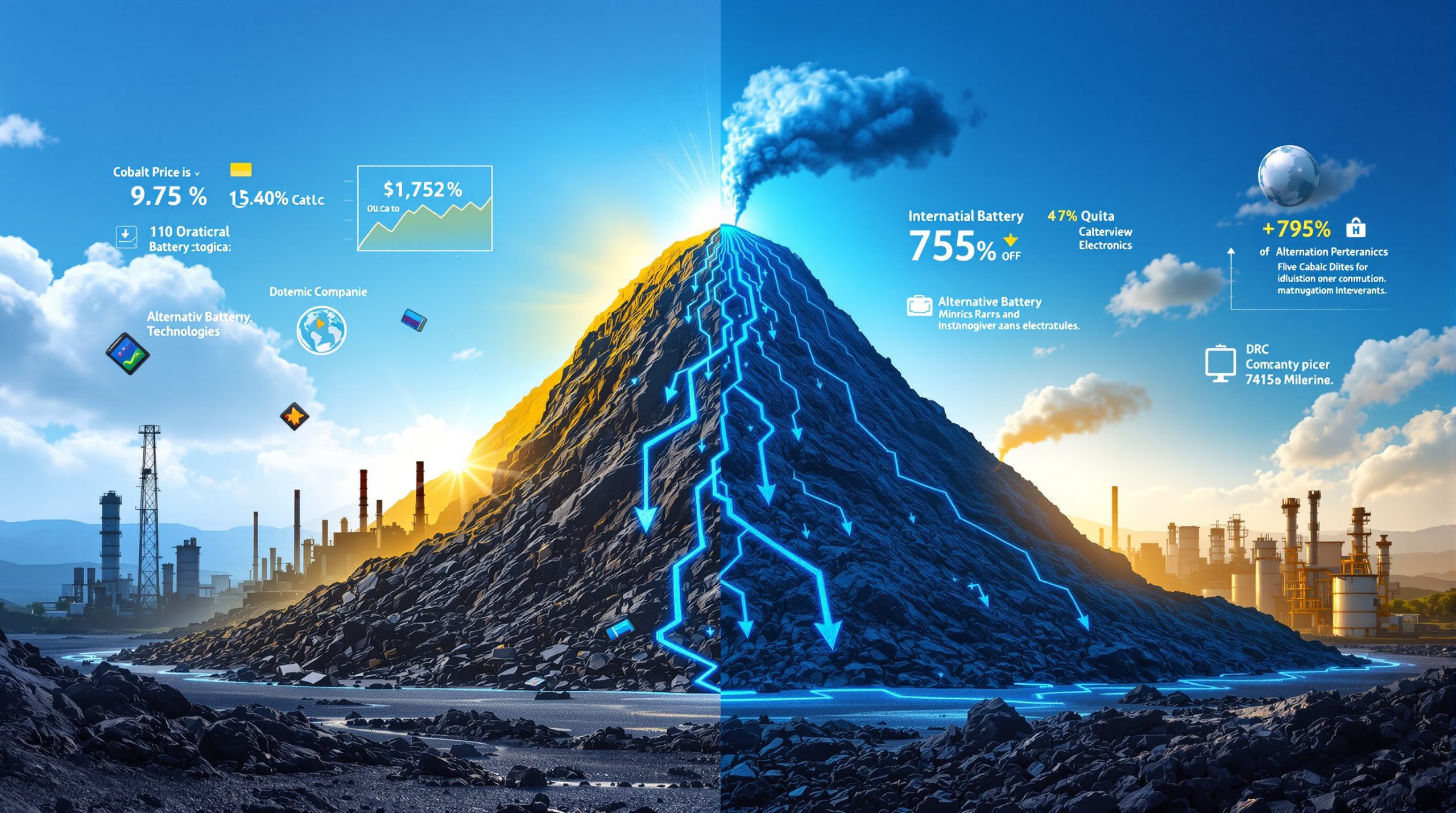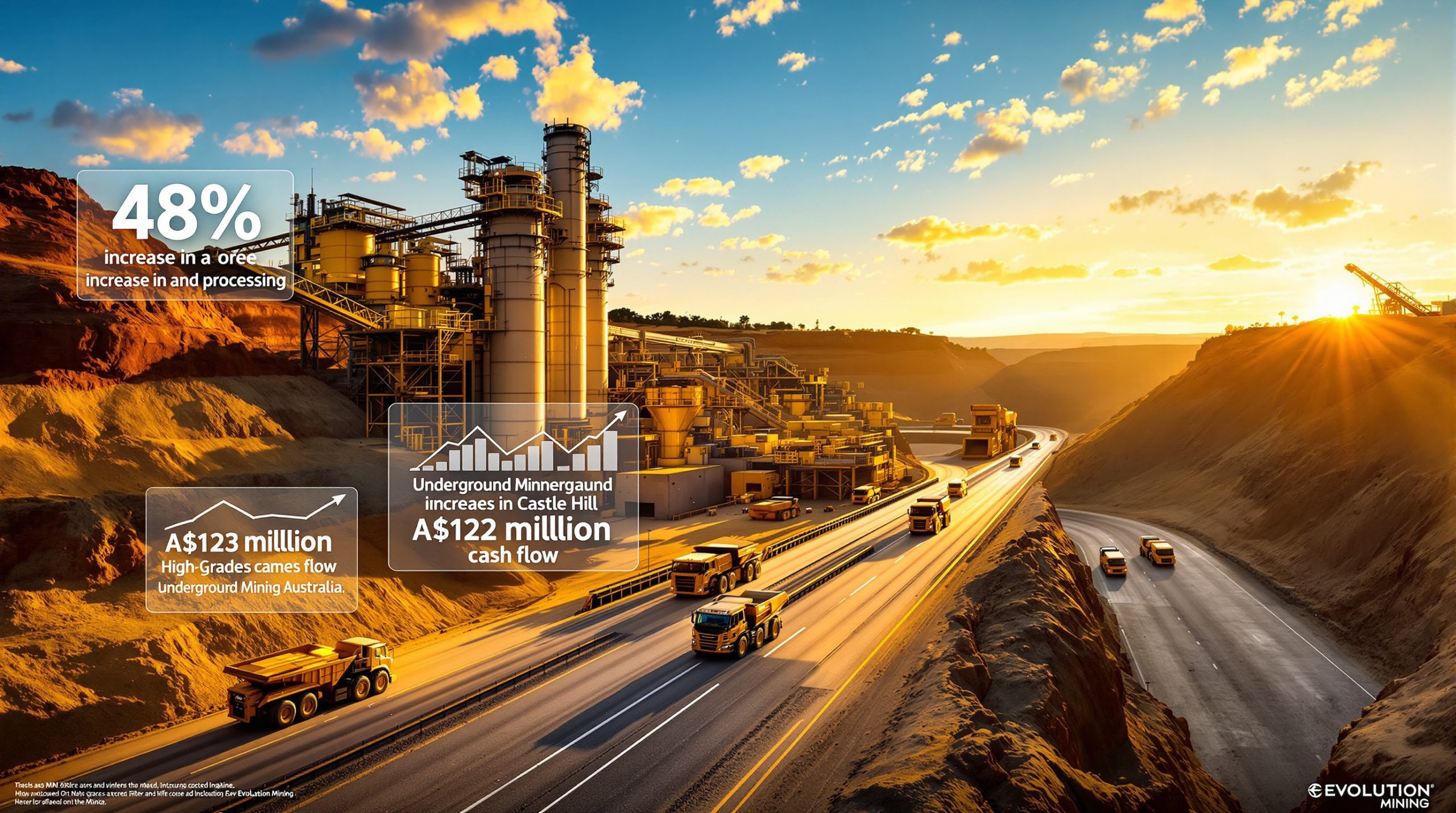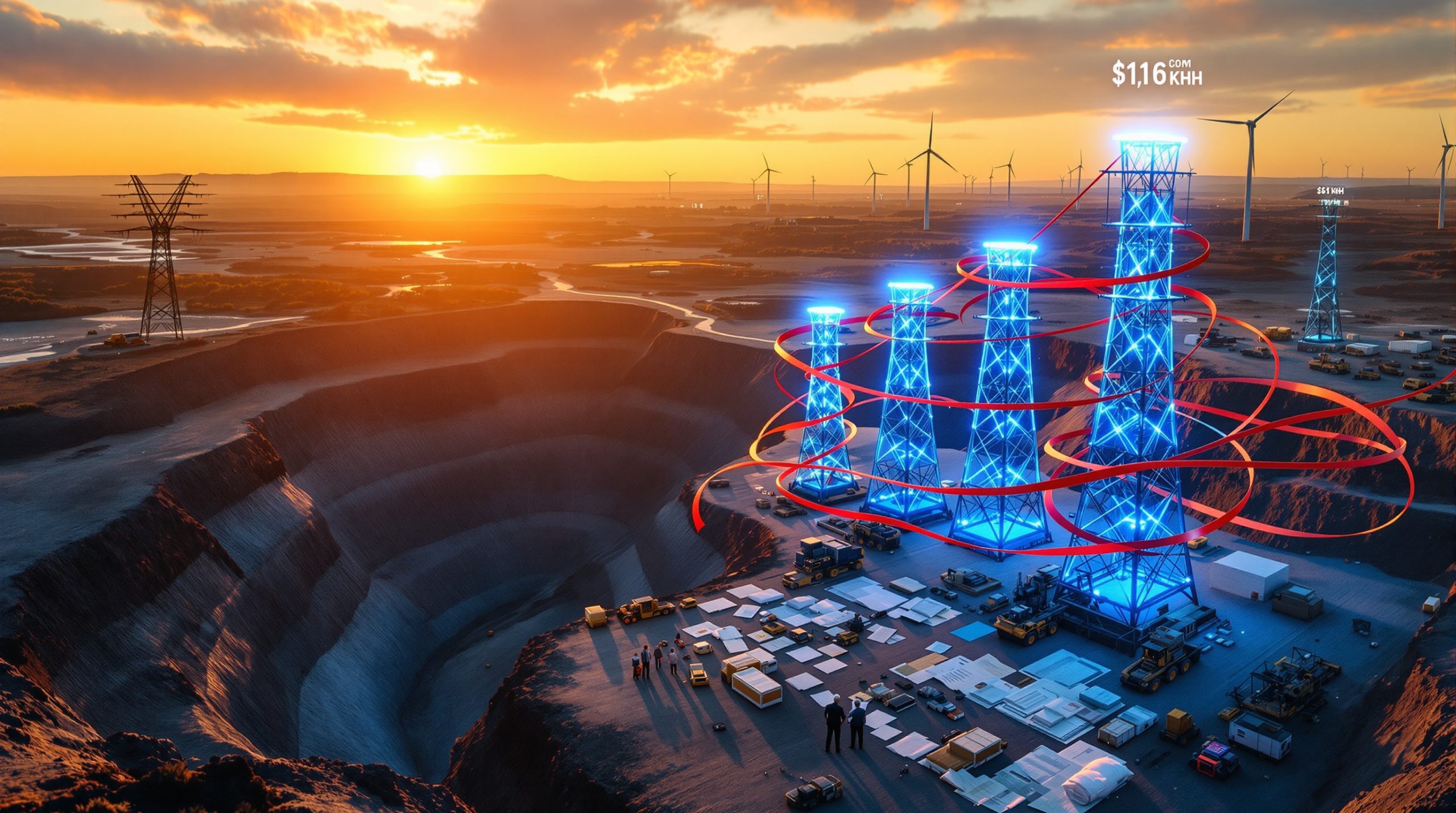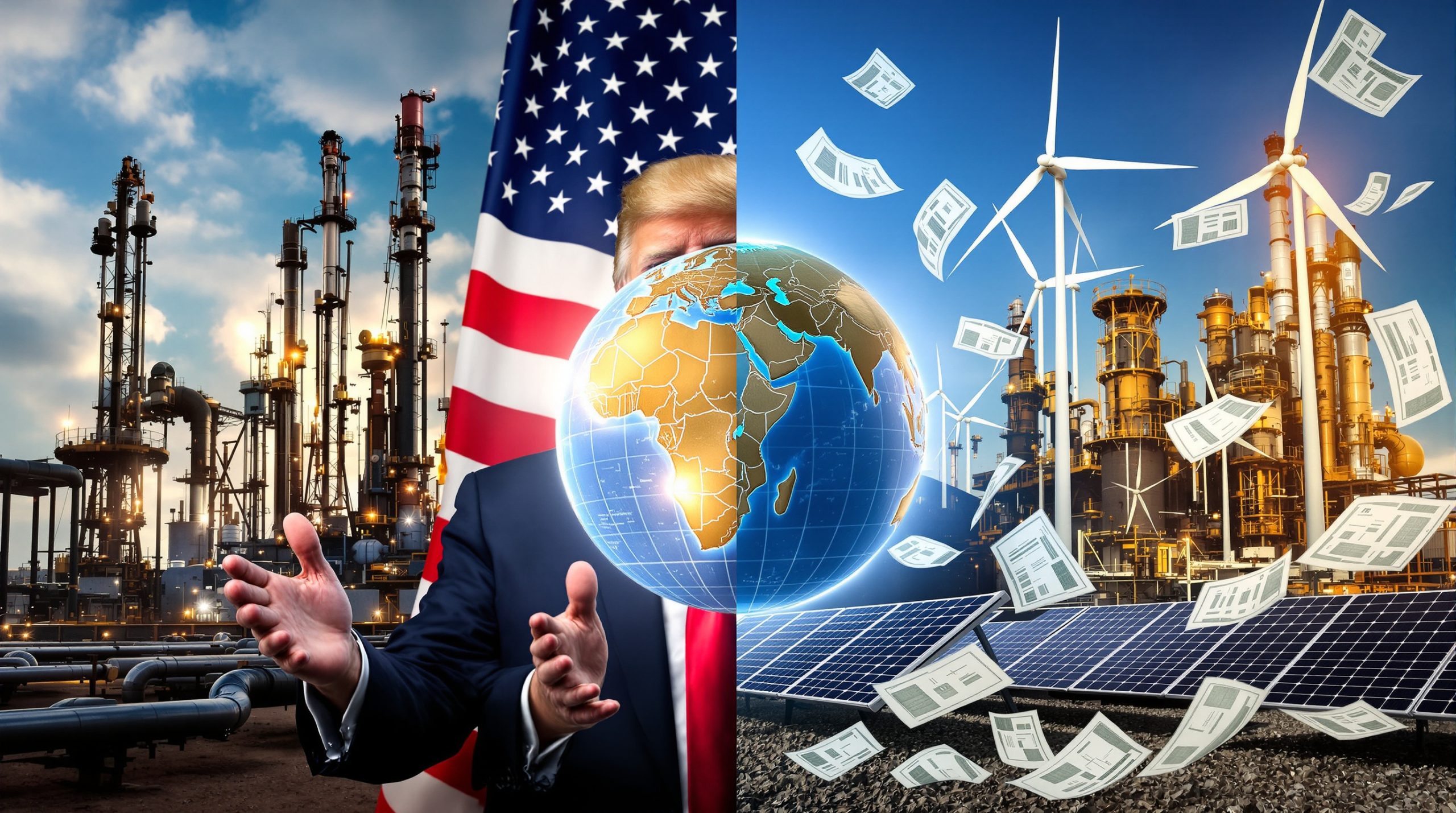Understanding the Trump-China Critical Minerals Dispute and Its Global Impact
The escalating tension between the United States and China over critical minerals has become a significant geopolitical and economic flashpoint with far-reaching implications for global supply chains, national security, and resource companies worldwide. The Trump-China critical minerals spat represents a fundamental shift in how nations view these resources as strategic assets rather than mere commodities. As both nations leverage their respective advantages in an increasingly competitive landscape, understanding the strategic importance of these resources is crucial for investors, policymakers, and industry stakeholders.
The Strategic Importance of Critical Minerals
Critical minerals, including rare earth elements (REEs), lithium, cobalt, and graphite, form the foundation of modern technology and green energy transitions. These resources aren't merely industrial inputs but strategic assets essential for economic and national security.
The role of critical minerals in energy transition cannot be overstated as they serve as vital components in:
- Advanced defense systems including precision-guided munitions, radar systems, and satellite communications
- Renewable energy technologies such as wind turbines and solar panels
- Electric vehicle batteries and motors
- Semiconductor manufacturing for computing and AI applications
- Telecommunications infrastructure supporting 5G networks
- Aerospace applications including aircraft engines and space technology
According to the U.S. Government Accountability Office, rare earth elements are particularly crucial for defense applications, with materials like neodymium and praseodymium (NdPr) being essential for missile guidance systems and military communications equipment.
How China Established Its Critical Minerals Dominance
China's commanding position in the critical minerals sector didn't happen by accident. Beginning in the 1990s with Deng Xiaoping's famous statement that "The Middle East has oil, China has rare earths," Beijing implemented a methodical strategy to control these valuable resources.
China's Market Position and Strategic Advantages
China now controls an overwhelming share of global critical minerals processing:
| Critical Mineral Sector | China's Global Market Share |
|---|---|
| Rare Earth Processing | 87-90% |
| Permanent Magnets | ~90% |
| Lithium Refining | 60-65% |
| Cobalt Processing | 70-73% |
| Graphite Production | 65-70% |
This dominance stems from several key advantages:
- Long-term strategic vision: Beijing identified these resources as strategically vital decades ago, implementing policies to secure supply chains while Western nations focused elsewhere
- State-backed investment: Massive capital allocation to mining and processing infrastructure, with billions directed toward developing technological expertise
- Regulatory flexibility: Less stringent environmental regulations compared to Western competitors, allowing for lower production costs
- Vertical integration: Control across the entire supply chain from mining to manufacturing of finished components
- Technical expertise: Decades of accumulated knowledge in complex processing techniques, particularly the challenging multi-stage solvent extraction processes needed for rare earth separation
According to a recent analysis by the Guardian, the concentration of processing expertise in China has created significant barriers to entry for competitors seeking to establish alternative supply chains.
Recent Escalation: From Trade Tensions to Resource Weaponization
The Trump-China critical minerals spat has intensified through several key developments in recent years.
Timeline of Critical Developments
Looking at verifiable actions that have already occurred:
- August 2023: China announced export controls on gallium and germanium, citing national security concerns
- October 2023: China restricted exports of rare earth magnet processing technology
- December 2023: China announced export controls on graphite products
These actions represent a significant shift from treating these materials as simple commodities to wielding them as strategic leverage in international relations.
According to the Peterson Institute for International Economics, these restrictions represent a fundamental pivot in critical minerals strategy from both nations: "Unlike previous trade disputes over manufactured goods or agricultural products, critical minerals present unique challenges: geographic concentration of deposits, decade-long investment timelines, technical barriers to entry, and direct linkages to national security capabilities."
What Makes This Dispute Different From Previous Trade Tensions
This resource conflict differs fundamentally from earlier trade disputes in several important ways:
- Direct national security implications: Unlike consumer goods, these minerals are essential for defense systems and critical infrastructure
- Limited substitutability: Many applications have no viable alternatives to these specific minerals, making supply disruptions particularly problematic
- Long development timelines: S&P Global Market Intelligence reports that developing new mines from discovery to production averages 10-15 years in developed nations, compared to 18-36 months for relocating traditional manufacturing
- Environmental trade-offs: Reshoring production involves difficult environmental and regulatory hurdles, particularly for processing operations with chemical byproducts
- Structural rather than cyclical: The conflict reflects fundamental shifts in global power dynamics and strategic competition, not temporary economic tensions
How Are Western Nations Responding to China's Dominance?
Western governments have recognized the strategic vulnerability created by China's control of critical minerals and are implementing multi-pronged strategies to reduce dependence.
U.S. Strategic Countermeasures
The United States has implemented a comprehensive approach including:
- Domestic production incentives: The 2022 Inflation Reduction Act allocated $369 billion for clean energy, including provisions to support domestic critical minerals production
- Defense Production Act: In March 2022, President Biden invoked the Defense Production Act for critical minerals, authorizing financial support for domestic production
- CHIPS and Science Act (2022): Provided $52.7 billion for semiconductor manufacturing, with provisions for critical minerals supply chains
- International partnerships: Coordination with allies including Australia, Canada, and European nations to develop alternative supply chains
- Research funding: Increased investment in alternative materials and recycling technologies to reduce dependence on certain critical minerals
Trump's critical minerals order further accelerated these efforts by directing federal agencies to prioritize domestic production and processing capabilities.
The Australian Response and Opportunity
Australia has positioned itself as a key alternative supplier in the critical minerals landscape:
- Government backing: Australia established a $2 billion Critical Minerals Facility in 2022 to provide loans for critical minerals projects
- Strategic partnerships: Deepening ties with the U.S. and other allies seeking supply diversification
- Financial support: Export Finance Australia has provided financing support to critical minerals projects, including rare earths ventures
- Project acceleration: Fast-tracking approvals for projects with strategic importance to global supply chains
- Value-added processing: Investment in domestic refining and processing capabilities to capture more of the value chain
The establishment of Australia's critical minerals reserve represents a significant step in securing supply chains for both domestic and allied nation requirements.
What Does This Mean for Critical Mineral Companies?
The reconfiguration of critical mineral supply chains creates clear opportunities for certain companies while presenting challenges for others.
Winners and Losers in the New Landscape
Potential Winners:
- Western producers with advanced projects nearing production
- Companies with established offtake agreements with Western manufacturers
- Firms with government backing or strategic investor support
- Enterprises with vertically integrated capabilities from mining to processing
- Companies in politically stable jurisdictions aligned with Western interests
According to Wood Mackenzie, "success factors for non-Chinese rare earth projects include: secured offtake agreements with Western end-users, government financial support or guarantees, access to patient capital willing to accept longer payback periods, and technical expertise in processing."
Facing Challenges:
- Companies dependent on Chinese processing or markets
- Projects without clear path to financing in uncertain market conditions
- Firms without strategic partnerships or government support
- Enterprises lacking technological differentiation or cost advantages
- Companies without binding offtake agreements with creditworthy counterparties
Industry analysts note that non-Chinese rare earth projects have historically struggled to secure commercial financing due to high capital intensity ($300M-$1B+ for integrated operations), long payback periods (10-15+ years), price volatility risk, and technical complexity.
The Arafura Rare Earths Case Study: Positioning for Success
Arafura Rare Earths exemplifies a company potentially benefiting from the current geopolitical environment around critical minerals.
Strategic Advantages in the Current Climate
Arafura's Nolan Project in Australia's Northern Territory demonstrates several key attributes that position it well:
- Advanced project status: The Nolan Project has measured, indicated, and inferred mineral resources totaling 56 million tonnes at 2.6% Total Rare Earth Oxide (TREO)
- Target production: Planning to produce 4,440 tonnes per annum of NdPr oxide
- Mine life: Estimated 28+ year operational lifespan
- Government backing: Received a $30 million loan from the Northern Territory Government in 2022
- Strategic investors: Backed by Hancock Prospecting (Gina Rinehart's company), which acquired a significant stake beginning in December 2020
- Geographic advantage: Located in a stable, allied nation with strong ties to the U.S.
- Critical product focus: Concentrating on NdPr, among the most strategically important rare earths for permanent magnets used in EVs and wind turbines
These attributes address many of the success factors identified by industry analysts as essential for non-Chinese rare earth projects in the current geopolitical environment.
What Are the Broader Economic Implications?
The Trump-China critical minerals spat is creating widespread economic consequences that extend far beyond the mining sector.
Global Economic Ripple Effects
Key impacts include:
- Supply chain disruptions: Manufacturing delays and production relocations as companies seek to secure reliable material sources
- Price volatility: Significant fluctuations in critical mineral prices affecting downstream industries
- Investment shifts: Capital reallocation toward politically "safe" jurisdictions
- Innovation acceleration: Increased R&D in alternatives and recycling technologies
- Regional economic impacts: New opportunities for resource-rich allied nations
- Inflationary pressure: Higher input costs for technology and green energy products
The Trump tariffs global impact has accelerated these trends, with Bloomberg reporting a significant surge in rare earth stocks as investors position for prolonged supply chain disruptions.
How Might This Dispute Evolve?
The critical minerals conflict could develop along several potential trajectories:
- Multilateral coordination: Western nations could form more cohesive alliances to pool resources and expertise
- Technological adaptation: Development of alternative materials or processing methods to reduce dependency
- Increased recycling: Greater emphasis on urban mining and recycling of existing materials
- Hybrid supply chains: Partial decoupling with selective cooperation in non-critical areas
- Diplomatic resolution: Negotiated agreements on export quotas and technology sharing
FAQ: Key Questions About the Critical Minerals Dispute
What exactly are "critical minerals" and why do they matter?
Critical minerals are raw materials essential for economic and national security that face supply chain vulnerabilities. They include rare earth elements, lithium, cobalt, graphite, and others crucial for advanced technology, defense, and clean energy applications.
Can the U.S. and allies realistically replace Chinese critical mineral supplies?
Complete replacement is challenging in the short term due to China's processing dominance and technical expertise. However, medium-term diversification (3-7 years) is feasible with sufficient investment and policy support.
How might this dispute affect consumer technology prices?
Consumers may face modest price increases for electronics, electric vehicles, and renewable energy products as manufacturers absorb higher input costs from diversified supply chains.
What role do recycling and alternatives play in this conflict?
Recycling and material substitution offer partial solutions but face technical and economic limitations. Current recycling rates for most critical minerals remain below 20% of total demand.
How are other nations positioning themselves in this dispute?
Resource-rich nations like Australia, Canada, and Brazil are accelerating critical mineral development, while manufacturing hubs like Vietnam and Mexico seek to benefit from supply chain relocations.
Conclusion: The New Critical Minerals Landscape
The Trump-China critical minerals spat represents more than a temporary trade disagreement—it signals a fundamental restructuring of global resource supply chains with lasting implications. For investors, companies, and policymakers, understanding this evolving landscape is essential for navigating the complex intersection of geopolitics, economics, and resource security.
As Western nations work to reduce dependence on Chinese supplies, significant opportunities emerge for companies and countries positioned to fill the gap. However, the transition will likely involve continued volatility, strategic competition, and technological innovation before a new equilibrium emerges in this critical sector.
Disclaimer: This article contains analysis of potential future scenarios based on current geopolitical trends and industry dynamics. Actual developments may differ significantly from these projections. Readers should consult professional advisors before making investment decisions based on this information.
Want to Stay Ahead of Major Mineral Discoveries?
Discover how significant ASX mineral discoveries can generate substantial investment returns by exploring Discovery Alert's dedicated discoveries page, powered by the proprietary Discovery IQ model that instantly transforms complex mineral data into actionable insights. Begin your 30-day free trial today at https://discoveryalert.com.au/discoveries/ to position yourself ahead of the market.
